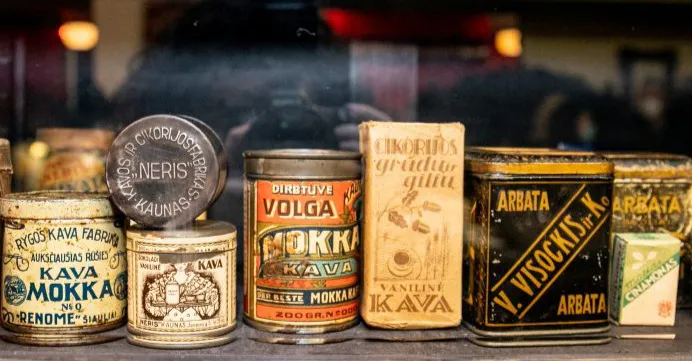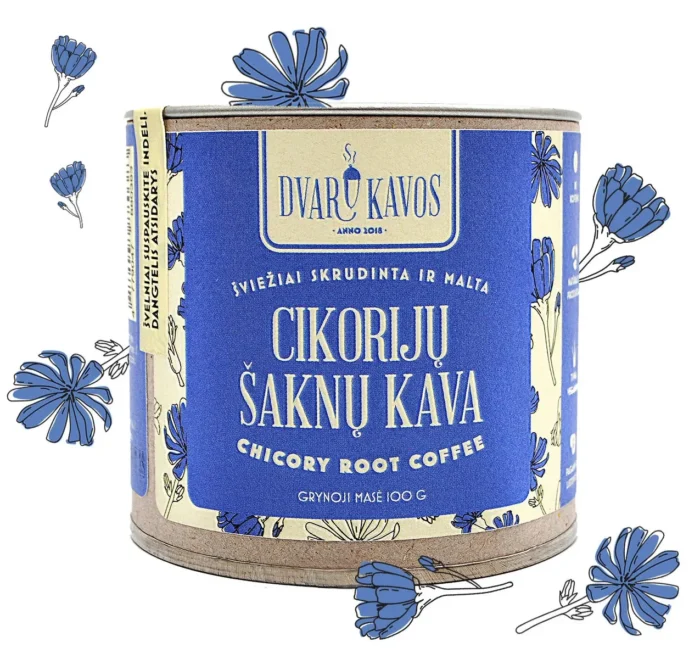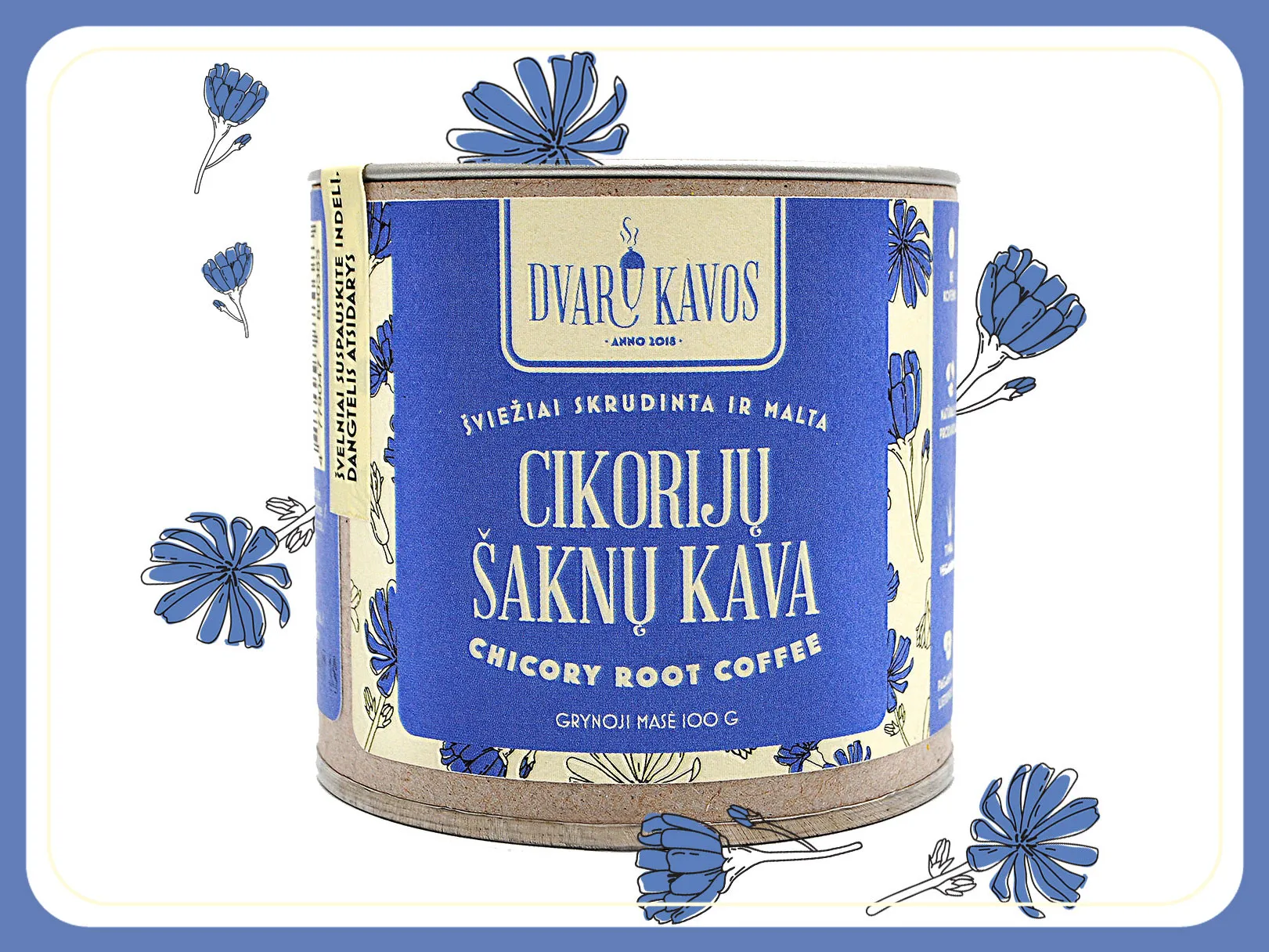This story aims to encourage you to try chicory coffee, which is made from roasted chicory plant roots, as an alternative to coffee.
We will begin by exploring the historical context of chicory coffee as a popular coffee substitute. One common question is when our ancestors started making and drinking coffee substitutes from roots, grains, or acorns. There is no doubt that various parts of the plant have been consumed since prehistoric times. However, the popularity of coffee beans in Europe is most closely associated with the emergence of a ritualistic drink, such as coffee, consumed either in the morning or after a meal.

According to an undisputed legend, the origins of coffee beans in Europe are rather unexpected and amusing. In 1683, Lithuanian and Polish hussars broke through the Turkish siege of Vienna, forcing the Turks to flee and leaving behind the coffee beans they had brought with them. Jerzy Franciszek Kulczycki, a Ukrainian who shared the spoils of the enemy, was the first to obtain these supplies. He soon opened the first ‘kaffenhauz’, which was the forerunner of the modern café.
Coffee was initially a luxury enjoyed by royalty, then by aristocrats, merchants, and officials, before becoming popular among city dwellers. During the 18th and 19th centuries, demand for coffee grew, but poor harvests, logistical disruptions caused by wars, blockades, or competition, meant that the price remained too high for many. As a result, people searched for a drink with a flavour and colour similar to coffee.
In several countries, the search for alternatives to coffee has led to a resurgence in the consumption of cereal-based beverages, and historians and archaeologists have documented the consumption of such beverages in various forms since the dawn of agriculture.

Grain coffee was introduced to Lithuanian and Polish estates in the 18th century. In the 19th century, the tradition of preparing and drinking coffee (so called caffia) in towns was adopted from Germany via the Klaipėda region. This tradition is now recognised as one of the culinary heritage signs of Lithuania Minor. The drink made from cereals, oak acorns, and chicory, and based on milk, is a popular choice among families in the town. It is often enjoyed with cake at 4 pm. Recipe books feature various versions of this drink, and housewives often improvise their own recipes.
 Chicory, including its leaves and roots, has been a part of European cuisine since the 17th century. The discovery that roasted chicory roots have a coffee-like taste likely coincided with the rise in demand for coffee beans and the development of new habits. Chicory coffee is believed to have originated in the Netherlands, where it was first mixed with bean coffee. However, it officially started in France in 1801 as a replacement for coffee during Napoleon’s blockade of imports. The international name for chicory, chicoree, is derived from French.
Chicory, including its leaves and roots, has been a part of European cuisine since the 17th century. The discovery that roasted chicory roots have a coffee-like taste likely coincided with the rise in demand for coffee beans and the development of new habits. Chicory coffee is believed to have originated in the Netherlands, where it was first mixed with bean coffee. However, it officially started in France in 1801 as a replacement for coffee during Napoleon’s blockade of imports. The international name for chicory, chicoree, is derived from French.
The popularity of this coffee alternative can be attributed to the plant’s undemanding nature, simple cultivation, and similar taste to coffee.
The first factory in our region producing coffee from roasted grains with chicory was established in Poland in 1818. In Lithuania, the largest coffee and chicory factories between the wars were in Kaunas – Neris and the chocolate factory Tilka. Two farms in the Kėdainiai region are known to have grown and produced chicory root coffee: the chicory plantation ‘Ragas’ in Gudžiūnai by the agronomist E. Širmulis, and the chicory coffee manufactory in Gėlainiai by Kondrotas.
The chicory itself, or Cichorium intybus, which also grows in Lithuania, is described in wonderful detail in the article by Ieva Šidlaitė and Prof. Rimvydas Laužikas, so we will not recount its properties and uses, but rather look at one of its properties, which is now becoming more and more relevant.

Chicory root and burdock root coffee are both rich sources of inulin, a natural fibre that has been extensively researched for its multifaceted beneficial effects on the body. The health benefits of inulin have been extensively researched and its multifaceted beneficial effects on the body have been confirmed:
- Binding and regulating blood lipids (‘bad’ LDL-cholesterol and triacylglycerol);
- hypoglycaemic effect: stabilises blood sugar levels;
- Protective effect on the gastrointestinal tract: stimulates the growth of bifidobacteria, improves the resistance of the intestinal wall and the passage of its contents;
- reduces the risk of many gastrointestinal diseases (ulcerative colitis, Crohn’s disease, colorectal cancer);
- helps the absorption of minerals, especially calcium, iron and magnesium;
- regulates appetite and strengthens the immune system.
The slow digestion of inulin is one of the most significant features of diabetes for modern societies facing its challenges. Chicory coffee, despite its bittersweet taste and caramel aftertaste, does not cause a sudden spike in blood glucose levels. Instead, it lowers them. For individuals with diabetes or those who want to maintain stable blood sugar levels, it can be an excellent tool for balancing health and pleasure.
Inulin is a natural sweetener that is soluble in water, particularly hot water and is not digested by our enzymes. This increases the volume of intestinal contents, and the polysaccharides that enter the large intestine are the primary fermentation substrates that promote the growth of our internal microflora. This fermentation results in our body’s need for vitamins and substances that are otherwise unavailable to it.
In addition to the benefits of inulin, chicory root also has antimicrobial, antioxidant (stimulates the production of cologne), anthelmintic, antitumour and hepatoprotective (liver protection) effects. Fresh chicory roots have traditionally been used as a remedy for malaria in the Middle East.
It is our turn to remember our cultural and culinary history, to find our own recipe and a time of day to dedicate to this less “sinful” but just as healthy cup of black or white coffee. Whether black or white, with milk or cream, honey or a pinch of spices, this simple pleasure can be a form of self-love from the very first sip.
References:
Food chemistry
Journal of Food Engineering
Molecules
Fokaitė, J., Lithuanian University of Health Sciences.
© The copying and distribution of any visual or textual information found on the website www.dvarokavos.lt is strictly prohibited without the consent of MB ‘Užupių manufaktūra’. If you have any questions regarding the use of the information on this website, please contact info@dvarokavos.lt.
